Article from the section “Calendar of work for a gardener, gardener, florist.”
The summer season is coming to an end, the garden is empty, almost the entire harvest has already been harvested. It would seem that you can already relax and unwind, but in fact there is still a lot of work to do both in the garden and in the vegetable garden. In October, all this work is mainly related to preparing the garden plot for winter.
This is what this article will discuss.First, let's talk about seasonal gardening.
October. Seasonal work for gardeners
Your garden: work of the month
October is the time to harvest late varieties of apples and pears. Do this in the first ten days and put them in storage. To keep fruits longer, they should be cooled as quickly as possible after picking and stored at a temperature of 0 - plus 5 degrees.
Renet Simirenko - at plus 2-3 degrees. Can be stored for several months at temperatures from minus 1 to minus 0.5.
If you picked the pears too early, store them at a temperature of 2-4 degrees, otherwise they will not ripen.
Before storing, the fruits of each variety must be sorted out, those damaged by diseases and pests or those with mechanical injuries must be selected. The larger the fruit, the earlier it ripens, the stronger it breathes, and the more it releases substances that affect the surrounding fruits, accelerating their ripening.
Therefore, before storing, it is better to sort fruits of one variety by size: large, medium, small. Place them in different containers and take them out of the cellar at different times.
Apples can be placed in cardboard boxes, lattice boxes, thin polyethylene translucent bags (1-1.5 kg each), or simply on racks.
October is the time to get your garden in order.
Around young fruit trees, you need to dig up the soil to a depth of 15-20 cm with a pitchfork. Later, on the frozen soil, mulch the tree trunk circles with sawdust or compost, preferably peat.
Dig holes and add fertilizer to them for planting seedlings in the spring.
In order for the trees to survive the winter better, phosphorus-potassium fertilizers are applied to the tree trunk circle (if they have not been applied before) and embedded in the ground with a hoe.
Clean the trunks from dead bark and then whiten them.It is better to whiten young trees (up to 5 years old) with a chalk solution. Adults - lime with clay (2.5 kg per 10 liters of water) or garden sunscreen paint.
Before winter, the garden must be cleared of weeds, plant debris, diseased and dried shoots of trees and shrubs.
We continue planting
In October, it's time to plant apple, pear and other fruit trees. Planting must be completed no later than 15 days before persistent frost.
You can trim the above-ground part in the fall only in berry gardens. You will prune the trees in the spring, but do not forget to do this so that the seedlings take root well. We prune to restore the balance between the roots injured during digging and the above-ground part.
When the leaves on the trees begin to turn yellow, spray the crowns with a urea solution (500 g per 10 liters of water) to destroy spores of scab and other fungal diseases.
Leaf fall does not mean that all tissues and organs of the plant have entered the dormant phase. At positive temperatures, flower buds continue to develop and roots grow.
Take care to improve the soil
In autumn it is necessary to take care of the soil. It’s good if you managed to add manure. Organic matter improves the soil, replenishes it with humus, makes the soil looser, air- and water-permeable.
If there is no manure and compost, use a shovel to chop fresh bean stalks, beans, carrot tops, nettles and dig the soil onto the bayonet of the shovel. This is also a useful organic fertilizer.
Do not throw the stems and flowers of marigolds and calendula into the fire. Crushed and embedded in the soil, they cleanse it of pests and fungal diseases. Tansy, yarrow, and chamomile are also useful for autumn soil fertilization.
Carry out shrub trimming work
In October, currant and gooseberry bushes are pruned.Free red and black currants and gooseberries from old and thickening branches. The branches must be free, then the harvest will please you.
Do not leave stumps when cutting branches. Pests and pathogens overwinter in them. Unthickened red currant bushes bear fruit for 15-20 years, black currant bushes for 5-6 years, and gooseberry bushes for 5-8 years. After this, it is advisable to completely renew the plantings.
Strawberries produce good yields of berries within two years. In the third year, the yield is greatly reduced. After the third full harvest, the plantation should be liquidated.
By this time, it accumulates diseases and is overgrown with malicious weeds:
- bindweed
- wheatgrass
- sow thistle
- dandelion
It is easier to plant a new strawberry than to weed out these weeds.
Dig up the soil under the bushes finely, without breaking up lumps, so that autumn moisture, melt water and snow are better absorbed. And some of the pests will die from frost.
Mulch new plantings of shrubs, trees, strawberries with humus, compost or peat. This will replace digging for you. Light loosening will be enough. If you mulch with straw, hay or sawdust, they must first be treated with urea or ammonium nitrate at 20-25 g per square meter. m.
First, pour the mulch 4-5 cm from the trunk, and when frosts begin, cover the trunk circle completely.
In October you can sow seeds:
- apple trees
- pears
- stone fruits
- Japanese quince
- viburnum, etc.
Over the winter they will undergo natural stratification and sprout in the spring.
Seasonal work for gardeners in October
Your garden: work of the month.
There's still plenty to do.
- Firstly, not all of the harvest has been harvested.
- Secondly, in the second half of October it is already time to plant winter garlic and, therefore, before it is too late, it is necessary to prepare the bed.
You need to think in advance about areas for planting onion sets and beds for winter crops. Don’t forget to prepare garden soil, humus, and compost for future seedlings and spring replanting of indoor plants.
Of course, you can get by with purchased soil mixtures, but it’s still better when tomatoes, peppers, and eggplants develop in a similar soil mixture both during the seedling period and later in the garden.
It is also necessary to store soil for winter crops. If you put it in the shed, it will not freeze by the time you need to fill the seed furrows with carrot, parsley, etc. seeds.
What will we sow in October?
So, the first in the series of October works are green manures. It no longer makes sense to sow spring green manure, but it’s time to sow winter crops (rye, winter wheat). Before the onset of frost, they will have time to sprout, grow and, therefore, have a good winter.
It is important not to overdo it with watering. If the soil in the garden bed is dry, before sowing, water it along the prepared furrows (in several stages). This will be enough for the cereal seeds to germinate and grow actively.
If the beds are no longer watered, the roots of the green manure plants will actively develop deeper in search of moisture, loosening the soil at a depth inaccessible to a garden shovel. In addition, deep roots pull up nutrients from the lower layers of the soil, which is also very important for increasing its fertility.
Summer residents who already have winter green manure growing in their gardens ask when it is better to dig them up - in the spring or already in the fall?
- Firstly, it depends on what kind of green mass the green manure has grown. If there is a lot of greenery,
You can dig it up in the fall. - Secondly, it is better to plant green manure into the soil in the fall if in the spring we are going to occupy the area with early vegetables and potatoes.
- In beds reserved for heat-loving nightshade crops, green manure can be dug up in the spring.
In the fall, you can add partially rotted manure and compost when digging: before spring, they will have time to turn into good organic matter in the soil.
It is better to leave fully prepared humus and compost for mulching garlic and onion beds (after planting), winter sowings, which we will carry out no earlier than November. We choose a place for winter crops in the sun, where melt and spring waters will not stagnate.
When digging, add up to a bucket of good compost or humus and according to Art. a spoonful of superphosphate and potassium sulfate. On a well-leveled bed, we make seeding furrows 15 cm apart from each other. (We have prepared the soil for filling the seeds and stored it under the roof.)
We will sow after the temperature has steadily dropped to a slight minus. If sown at the end of October - beginning of November, the seeds of cold-resistant crops (carrots, parsley, dill) may sprout and die after the onset of frost.
In the second ten days of October we plant winter garlic
Small onion sets with a diameter of no more than 1 cm are planted a week later than garlic. Both garlic and onions should just take root before frost.
If, according to forecasts, frosts are expected to occur soon after planting, we will cover the beds with humus or compost: under the layer of mulch, the soil will not immediately cool down and the bulbs and cloves will have time to take root.
If October is warm, it is better to mulch the garlic and onion beds after a cold snap, so that the soil does not warm up during periods of warming and the garlic and onions remain undisturbed until spring.
There is no waste in the garden, there is organic matter
Let's find time to tidy up the compost heap. We will remove its top layer and fold it until it reaches a loose condition. We will also add post-harvest plant residues there.
At the bottom of the heap, the compost, as a rule, is ready by autumn (unless, of course, we forgot to layer the plant remains with soil and water them) and it can be used to insulate the root zone of garden, perennial ornamental and garden plants for the winter.
In the spring there is no need to remove such shelter. Compost, having acted as insulation in winter, begins to work as a soil improver. When sorting compost, do not forget to select the beetles from it. You can simply put them in some container: the birds will have something to eat.
Let's take a shovel
To dig up or not to dig up beds in the fall and when is the best time to do it?
If the soil on the site, constantly replenished with organic matter, has become structural and does not become very compacted over the course of the season, it can simply be worked shallowly with a flat cutter.
Heavy areas, compacted as a result of frequent watering, do not absorb rain and spring moisture well without digging, and the snow is blown away from them without stopping. Both are bad for soil health. Let's dig up the beds that have become compacted over the season, after adding compost, humus, superphosphate and potassium sulfate.
If wireworms, cutworms, and beetles are bothering the area, it is recommended to dig up the soil as late as possible in order to turn the pests to the surface and freeze them.
It is better not to disturb light soils (sandy, sandy loam) in the fall: do not dig, do not apply fertilizers. Being dug up, such soil is highly susceptible to erosion: the already poor fertile layer is blown away by the wind, washed away by rain and melt water.
Fertilizers applied to light soils in the fall are washed into the lower horizons, inaccessible to plant roots. On such soils, beds of garlic, onions, and perennial vegetables (sorrel, asparagus, green onions, rhubarb) must be mulched in the winter, otherwise, after a snowless winter, seedlings may not be expected.
And the thicker the insulating layer, the greater the chances of successful overwintering of plants.
In stationary greenhouses in which the same vegetables are constantly grown, it makes sense to replace the top layer of soil. We place the soil from the greenhouse in a stack, layering it with fallen leaves, mowed lawn grass, and manure (if available).
Next season it is important not to let the stack dry out. After two years, the rested soil can be returned to the greenhouse by sending the next top layer removed in the greenhouse for recovery.
We continue harvesting.
In October, every day may be the last day of being in the beds of root vegetables and cabbage. Vegetables should not be allowed to freeze. Carrots, being in the ground, may not suffer from light frosts, but beets with their root crops “for show” will be damaged and will not be stored.
You don’t have to be in a big hurry to dig up the daikon: let it gain weight and juiciness. It can be covered with non-woven material on the arches.
We are not in a hurry to harvest parsnips: they can even overwinter in the garden bed. It is believed that parsnips taste better in cold weather.
Later, you can dig up the root parsley, leaving a few plants in the bed for spring greenery.We do not cut off the leaves from parsley that remains to overwinter in the garden bed, otherwise the plants may not survive the winter. A few parsley roots can be immediately transplanted into a pot to be placed on the kitchen windowsill.
Light freezing makes white cabbage sweeter. But if we are going to provide ourselves with not only sauerkraut, but also fresh cabbage for the winter, it is better to remove it before the onset of frosty weather.
If the cabbage does freeze, let it thaw on the root and only then cut it.
Cabbage intended for storage is either pulled out by the roots or left with a long stump. When stripping the head of cabbage, do not touch 3-4 covering leaves.
Brussels sprouts and kohlrabi will safely survive the first mild frosts without compromising the quality of the crop. On broccoli, we regularly cut off the small heads that form on the side shoots. We will remove the plants themselves from the garden after frost.
After harvesting the heads of white cabbage, heads of Brussels sprouts, heads of broccoli and cauliflower, we pull out the stems and stumps remaining in the beds by the roots, chop them and put them in compost. They should not be left in the ground until spring.
If Brussels sprouts or cauliflower do not have time to form a full-fledged harvest, the plants are dug up with roots and “transplanted” into damp sand or soil in a greenhouse or basement.
If there is no basement, cabbage can be grown in a greenhouse, covering it with film, straw mats or old blankets. The cabbage heads will grow due to the nutrients accumulated in the stalk and leaves.
We are not in a hurry to dig up leeks, but we leave a place in the basement where we can bury the plants for them. In the meantime, we’re once again pruning the leek stems so that they bleach.
Additionally, you need to add soil to the stalks of petiole celery. Many summer residents, in order to protect the stems from contamination, bleach celery by wrapping the petioles in thick paper that does not allow light to pass through.
In bleached petioles, the amount of essential oils decreases, and therefore bitterness decreases, they become more tasty. It will not be possible to preserve the juicy petioles for a long time after harvesting, so we leave the celery in the garden as long as possible.
Before the onset of cold weather, it can be covered with non-woven material or film on the arcs. Of course, we cannot save it all winter like this, but we can prolong the consumption of useful stems.
Although even after cutting it is possible to keep celery stalks fresh for several weeks. We cut off the upper part of the petioles (where the leaves are), wash them well, dry them so that there are no droplets of water left on the stems, wrap them in a paper towel, pack them in a plastic bag and put them in the refrigerator.
We take advantage of the last opportunity to prepare as much parsley and dill as possible for future use: dry, freeze or salt. Dried herbs can be ground in a blender and added to soups, main courses, and salads.
Greens, adding taste and aroma, will not “get confused” in the teeth. We wash the spinach leaves, dry them, pack them and put them in the refrigerator so that at least in October-November we can prepare green soup-puree.
We will try to dig up potatoes planted in the second half of summer on a fine day in order to immediately ventilate them and scatter them in the shed to dry.
In October, you should not delay the final harvesting of tomatoes, peppers, and eggplants. Harvested in fine, warm weather, they last longer. It is better to store eggplants in a plastic bag in the refrigerator.To prevent the fruits from sweating, they are first cooled and only then placed in a bag.
By washing, drying and packing in a plastic bag, you can store radishes harvested in October for a long time.
We will try to preserve as much as possible: the last vitamins of autumn, so that they last until spring.
October works of flower growers
About what work awaits flower growers in October read on the next page.
Other articles in this series:
- Seasonal work in the garden and vegetable garden in November.
- Seasonal work for gardeners and gardeners in December.
- Seasonal work for gardeners and gardeners in January.
- Seasonal work in the garden and vegetable garden in February.
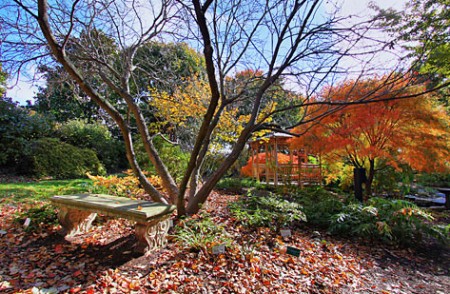
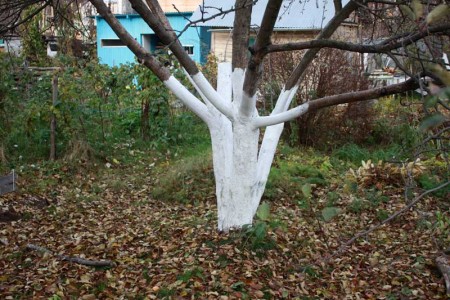
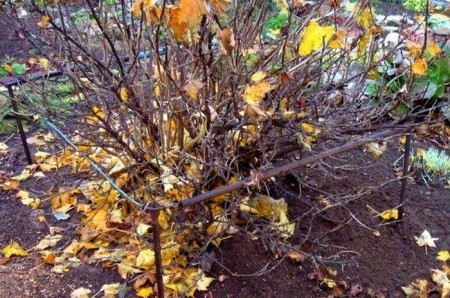
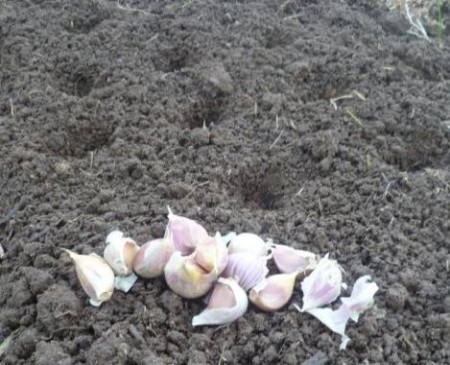
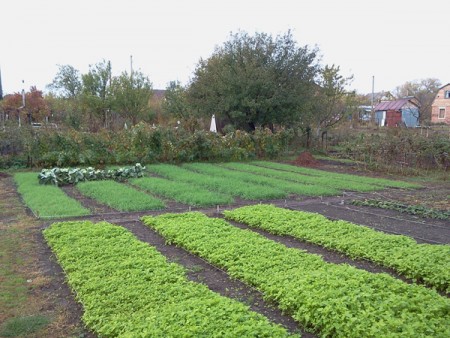
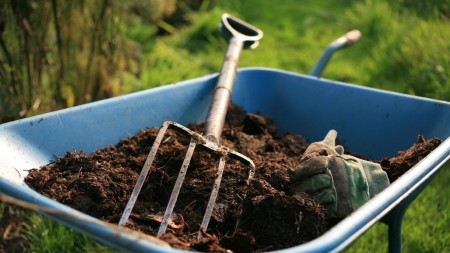
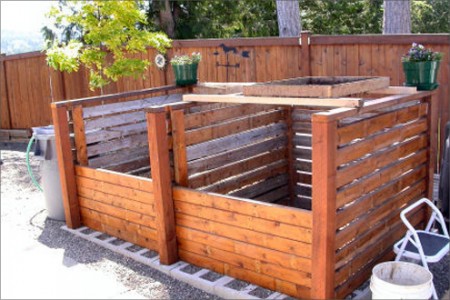
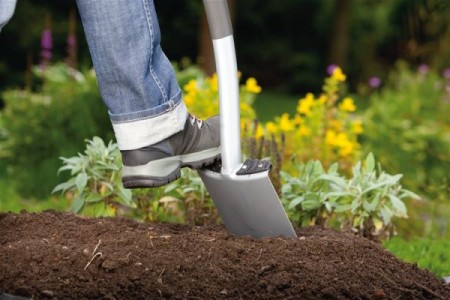
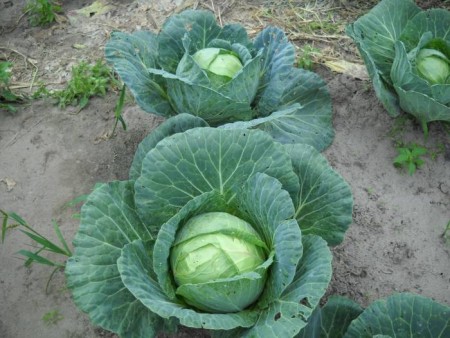
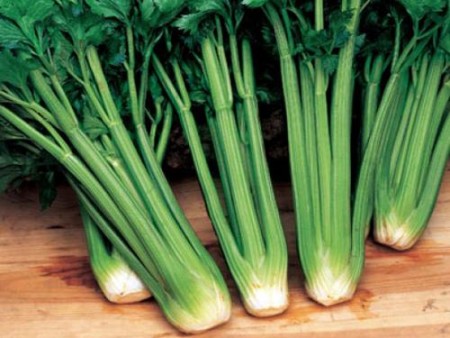

 (14 ratings, average: 4,00 out of 5)
(14 ratings, average: 4,00 out of 5) CUCUMBERS NEVER GET SICK, I'VE BEEN USING ONLY THIS FOR 40 YEARS! I SHARE A SECRET WITH YOU, CUCUMBERS ARE LIKE THE PICTURE!
CUCUMBERS NEVER GET SICK, I'VE BEEN USING ONLY THIS FOR 40 YEARS! I SHARE A SECRET WITH YOU, CUCUMBERS ARE LIKE THE PICTURE! You can dig a bucket of potatoes from each bush. Do you think these are fairy tales? Watch the video
You can dig a bucket of potatoes from each bush. Do you think these are fairy tales? Watch the video
 How our fellow gardeners work in Korea. There is a lot to learn and just fun to watch.
How our fellow gardeners work in Korea. There is a lot to learn and just fun to watch. Eye trainer. The author claims that with daily viewing, vision is restored. They don't charge money for views.
Eye trainer. The author claims that with daily viewing, vision is restored. They don't charge money for views. A 3-ingredient cake recipe in 30 minutes is better than Napoleon. Simple and very tasty.
A 3-ingredient cake recipe in 30 minutes is better than Napoleon. Simple and very tasty. Therapeutic exercises for cervical osteochondrosis. A complete set of exercises.
Therapeutic exercises for cervical osteochondrosis. A complete set of exercises. Which indoor plants match your zodiac sign?
Which indoor plants match your zodiac sign? What about them? Excursion to German dachas.
What about them? Excursion to German dachas.